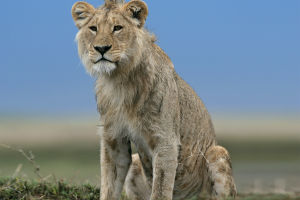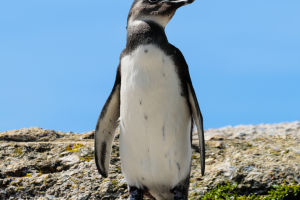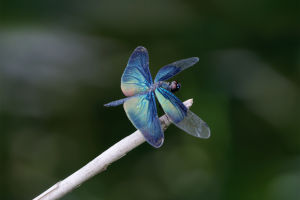Giraffes are remarkable creatures known for their towering height, long necks, and uniquely colored tongues.
If you’ve ever seen a giraffe up close, you might notice their tongues are not the usual pink like ours but a striking blue, purple, or even black shade. This unusual coloration isn’t just for show—it serves vital purposes linked to survival and adaptation in their natural habitat. Let’s explore why giraffes’ tongues are blue and the role this fascinating trait plays in their daily lives.
1. Protection From the Sun
Giraffes spend much of their day eating. Their primary diet consists of leaves, particularly from acacia trees, which are often high off the ground. To reach these leaves, giraffes use their tongues for extended periods, exposing them to the harsh African sun. A blue or dark-colored tongue acts as a natural sunscreen, helping to prevent sunburn. The pigmentation reduces the risk of UV damage during their daily feeding routines, which can last up to 12 hours a day.
2. Adaptation to High-Exposure Feeding
Their tongues are incredibly long, often extending up to 18-20 inches, allowing giraffes to reach leaves and navigate thorny branches. This constant exposure to sunlight necessitated the evolution of their tongue’s dark coloration. The darker hue contains more melanin, which provides protection similar to how melanin in human skin protects against UV rays. This adaptation ensures their tongues remain functional and healthy despite constant exposure.
3. Enhanced Durability
The blue pigmentation isn’t just for sun protection—it also contributes to the tongue’s overall durability. A giraffe’s tongue is tough and covered in thick papillae, which, combined with its dark coloration, helps reduce wear and tear. This toughness is crucial because giraffes often eat thorny plants like acacia, whose sharp thorns could damage less resilient tissues. The combination of pigmentation and physical toughness enables their tongues to endure the rigors of feeding without injury.
4. Moisture Retention
Giraffes live in arid regions where water is scarce. Their blue tongues may also play a role in retaining moisture. The melanin-rich pigmentation helps minimize evaporation, ensuring their tongues don’t dry out during prolonged feeding sessions. This efficiency is vital in their habitats, where every adaptation contributes to survival in harsh conditions.
5. A Unique Feeding Tool
Beyond their color, giraffe tongues are prehensile, meaning they function like fingers to grasp leaves and manipulate branches. Their dark tongues complement this functionality by ensuring they remain effective tools for feeding without succumbing to damage from environmental factors. Combined with their saliva, which is thick and antibacterial, giraffes can safely consume plants that might harm other animals.
6. Evolutionary Advantage
The blue tongue is a result of millions of years of evolution. As giraffes evolved to become taller and more specialized feeders, their tongues adapted alongside them. The combination of pigmentation, toughness, and length offers them an evolutionary edge, allowing them to thrive in their niche environment. This adaptation not only supports their dietary habits but also underscores how nature crafts unique solutions for survival challenges.
7. Other Animals With Dark Tongues
Giraffes aren’t the only animals with dark tongues. Okapis, their closest relatives, also have bluish tongues, as do some species of cows and antelopes. These similarities suggest a shared evolutionary adaptation among species that rely on extensive tongue use in sunlit or harsh environments. While giraffes’ tongues are the most famous for their coloration, they’re part of a broader pattern seen in nature.
Giraffes’ blue tongues are more than a visual curiosity—they’re a testament to nature’s ingenuity. From protection against the sun to improved durability and moisture retention, this unique adaptation is perfectly suited to their lifestyle. The dark pigmentation ensures that giraffes can spend hours foraging among thorny branches under the intense African sun without compromising their health or efficiency. It’s a fascinating reminder of how animals evolve to meet the demands of their environments, making the giraffe one of nature’s most extraordinary creations.
Amazing Giraffe Facts You Need To Know!
Video by Facts Net


